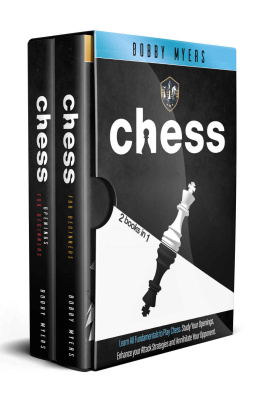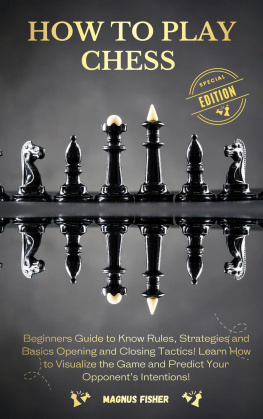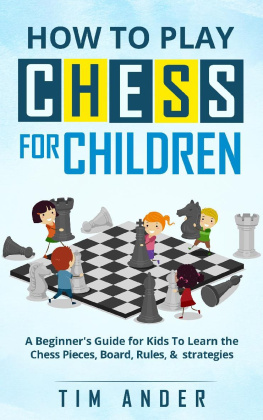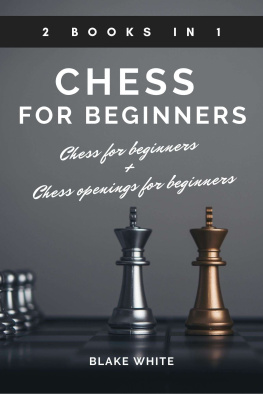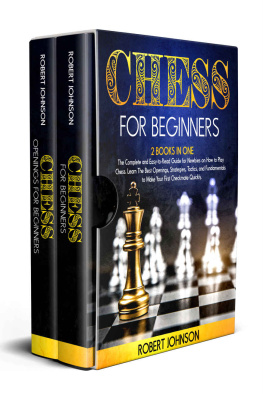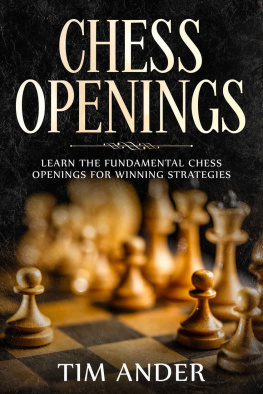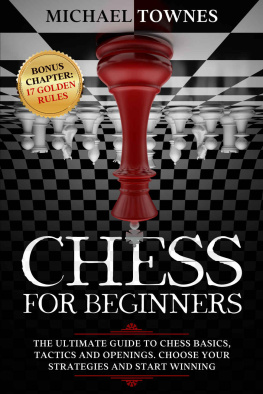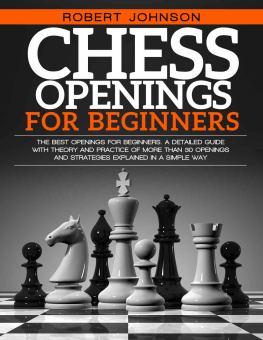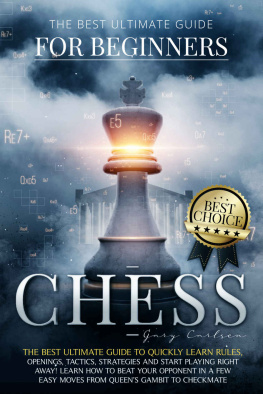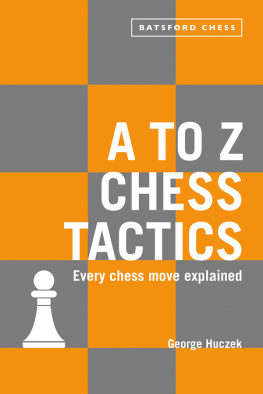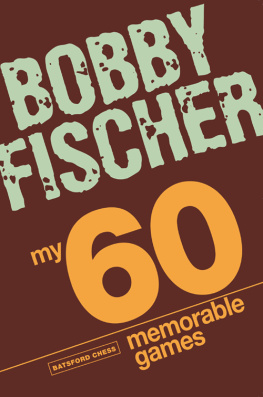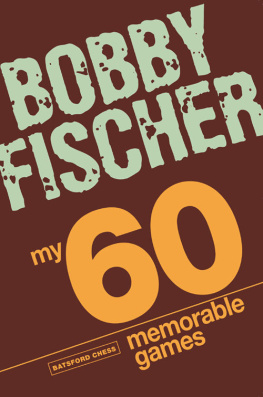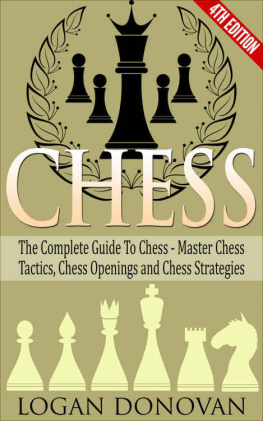CHESS
2 Books in 1:
Learn All Fundamentals To
Play Chess Study Your Openings, Enhance Your Attack Strategies And Annihilate Your Opponent
By
Bobby Myers
Copyright 2021 - All rights reserved.
The content contained within this book may not be reproduced, duplicated or transmitted without direct written permission from the author or the publisher.
Under no circumstances will any blame or legal responsibility be held against the publisher, or author, for any damages, reparation, or monetary loss due to the information contained within this book. Either directly or indirectly.
Legal Notice:
This book is copyright protected. This book is only for personal use. You cannot amend, distribute, sell, use, quote or paraphrase any part, or the content within this book, without the consent of the author or publisher.
Disclaimer Notice:
Please note the information contained within this document is for educational and entertainment purposes only. All effort has been executed to present accurate, up to date, and reliable, complete information. No warranties of any kind are declared or implied. Readers acknowledge that the author is not engaging in the rendering of legal, financial, medical or professional advice. The content within this book has been derived from various sources. Please consult a licensed professional before attempting any techniques outlined in this book.
By reading this document, the reader agrees that under no circumstances is the author responsible for any losses, direct or indirect, which are incurred as a result of the use of information contained within this document, including, but not limited to, errors, omissions, or inaccuracies.
Table Of Contents
Book 1: (FIRST PAGE)
CHESS FOR BEGINNERS
Learn How to Calculate Each Move as a Grandmaster and Stop the Blundering. Choose Your Strategy and Force Your Opponent to Resign
Book 2: (FIRST PAGE)
CHESS OPENINGS FOR BEGINNERS
Find Out the Most Important Openings and
How to Counter-attack the Opponent Ones Develop Correctly Your Pieces and Predict Each Move
CHESS FOR BEGINNERS
Learn How to Calculate Each Move
as a Grandmaster and Stop the
Blundering. Choose Your Strategy and
Force Your Opponent to Resign
By
Bobby Myers
Table Of Contents
Introduction
C hess is a fascinating game between two people, and a strategy board game played for decades. Chess is commonly thought to originate in India around the sixth century during the Gupta Empire. The pieces used in the game depicted their army's four divisions: infantry, cavalry, elephants, and chariot. Now they have grown into the contemporary Pawn, Knight, Bishop, and Rook. The Chess game is so intense and competitive that the International Olympic Committee considers it a sport. I know from my Chess experience it's easy to learn, but it takes years to master.
Chess isn't that bad to learn, but it can be a little difficult because each piece can be moved differently. Chess is played on an eight-row and eight columns square board. The eight rows are called ranks and have numbers 1 to 8. The 8 columns are called files and have letters A to H. The players are named "White" and "Black," and each begins a 16-piece game. Every player starts with two Bishops, one King, two Knights, eight Pawns, one Queen, and two Rooks. To start playing, pieces are moved to an occupied square by a piece of the opponent.
If you place a piece on your opponents' occupied piece, it is taken off the board. If a King is directly attacked by one or two of the enemy's pieces, he is said to be in charge, and the game will end. A Chess game is generally divided into three sections: the first 10 to 25 moves (when players move their pieces in positions to the upcoming battle), the middle-game, which they claim is the most exciting part of the game; and the end-game, when the Kings are usually more involved in the combat.
Chess games don't necessarily end when a King's check is finished because both players will leave if they don't believe they can win. Use this simple hint when moving a Chess piece, consider the total worth of pieces on both sides. Then change these moves by factors which suit the position of the job, for example, advanced Pawns are usually more valuables than those on the original squares), the organizing of the objects (for example, a couple of Bishops generally co-ordinate better than a Bishop and Knight pair), and the position.
Internet Chess has been popularized on various websites since it enables people to play against a computer machine. Online Chess also strengthens the game, allowing a worldwide Chess player community to play regardless of its geographical location or time zone. With so many websites hosting Chess games, it is easy for a person to find an online Chess game or tournament. Chess is one of the world's most famous games, played at home, parties, online, and tournaments by millions worldwide. Often a Chess game may be played for days or weeks.
Chess helps you to see and foresee the results of your actions. The difference between winning and losing the game may be a good Chess strategy. If you wish to know the Chess game fundamentals, it wouldn't be bad to read and digest this beginner's guide.
CHAPTER 1:
The Board and the Goal
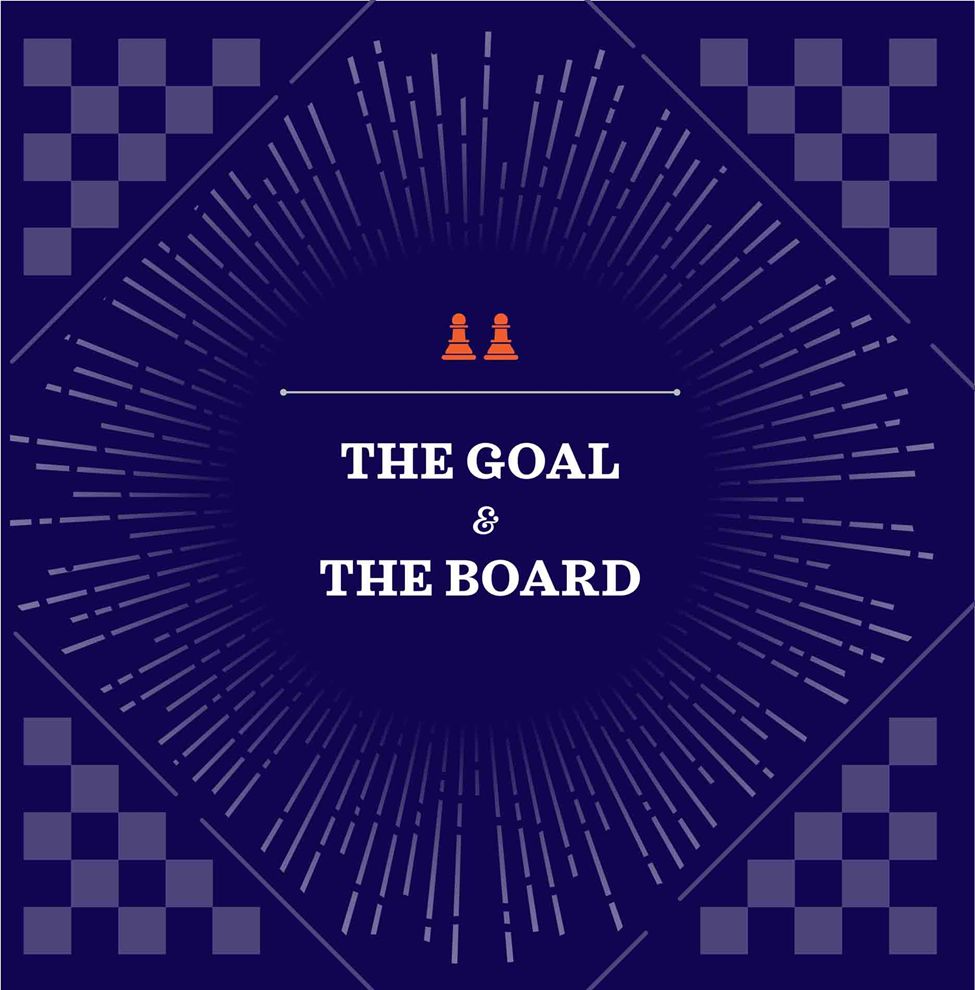
The Goal of the Game
T he King is the most important piece whose status determines when the game comes to an end. The goal of the game is to get your opponents King into a position where it is under attack, is unable to move, and cannot be helped by its own men; this is also known as checkmate. Check is when the King is under attack but can escape. The important question is when the King is under attack, what can you or your opponent do? The best way to remember is by using the ABCs.
THE ABCs OF CHECK
AWAY: Runaway with the King to a square where it cant be captured.
BLOCK: Put a piece in between the attacker and the King.
CAPTURE: Capture the piece that is attacking the King.
An important rule to note is that the King can never be captured in Chess. You are also not allowed to put your King into check (move on a square protected by an enemy player). Since this is an illegal move, if a person goes ahead and does this, he or she should take it back and make a legal move instead. It is also illegal to keep your King in check. When your King is under attack, you must stop all plans and protect your most important piece. A player may also resign (give up) in a game by telling the opponent verbally, I resign! or putting his or her King down.
But do all Chess games end in a win or lose? No! In fact, the game of Chess allows for six different types of draws:
1. AGREEMENT: You may offer a draw to your opponent after youve made your move. If your opponent accepts, the game has come to an end. If your opponent declines, the game continues.
2. INSUFFICIENT MATERIAL: When both sides dont have enough pieces to checkmate either King, the game ends.
3. 50-MOVE RULE: If a Pawn hasnt been moved or a piece hasnt been captured in 50 moves, either player may claim a draw. The only way to prove this scenario is to have the moves written down or an arbiter monitoring the game.
4. STALEMATE: When a players King is not in check, and no legal moves can be made, the game ends.
5. PERPETUAL CHECK: When a player checks the King repeatedly and is able to copy the exact same position three times, the game ends.
6. THREE-TIME REPETITION: Copying the exact position three times but without checks results in a draw.
Each of these draws will be covered more in-depth in chapter 5.

